5- inorganic chem
1/23
There's no tags or description
Looks like no tags are added yet.
Name | Mastery | Learn | Test | Matching | Spaced |
|---|
No study sessions yet.
24 Terms
what is the rate equation?
rate= k (A)^m (B)^n
what is the overall order of reaction
m+n
what does order 0 mean
the rate is unaffected by the concentration
what does order 1 mean
the rate is direclty proportional to the concentration, when it doubles so does the rate
what does order 2 mean
rate is proportional to the concentration squared, if you double the concentration the rate will increase by a factor of 2²
what does half life mean
the time take for the concentration of a reactant to decrease by half
what is the equation for finding k when using half life of a first order reaction, concentration time graphs
k= ln 2/ half life
whats the equation that links rate, change in concnetration and change in time
rate = change in conc/ change in time
how to find k with order 0 using graphs
concentration time graph: gradient = k
rate concentration graph: y intercept = k
how to find k with order 1 using graphs
concentration time graph: k= l2/ h.lL
rate concentration graph: gradient = k
initial rate
the instantaneous rate of a chemical reaction at t=0
what are pros and cons of continous monitoring
pros: more accurate
cons: more work to monitor several reactions over some time. Takes longer to process results
what are pros and cons of the clock method
pros: quick and simple to carry out easy to process 1/t
cons: only gives an approximation of the initial rate, need to choose quantities carefully
What is the shape of an order 0 graph showing time concentration
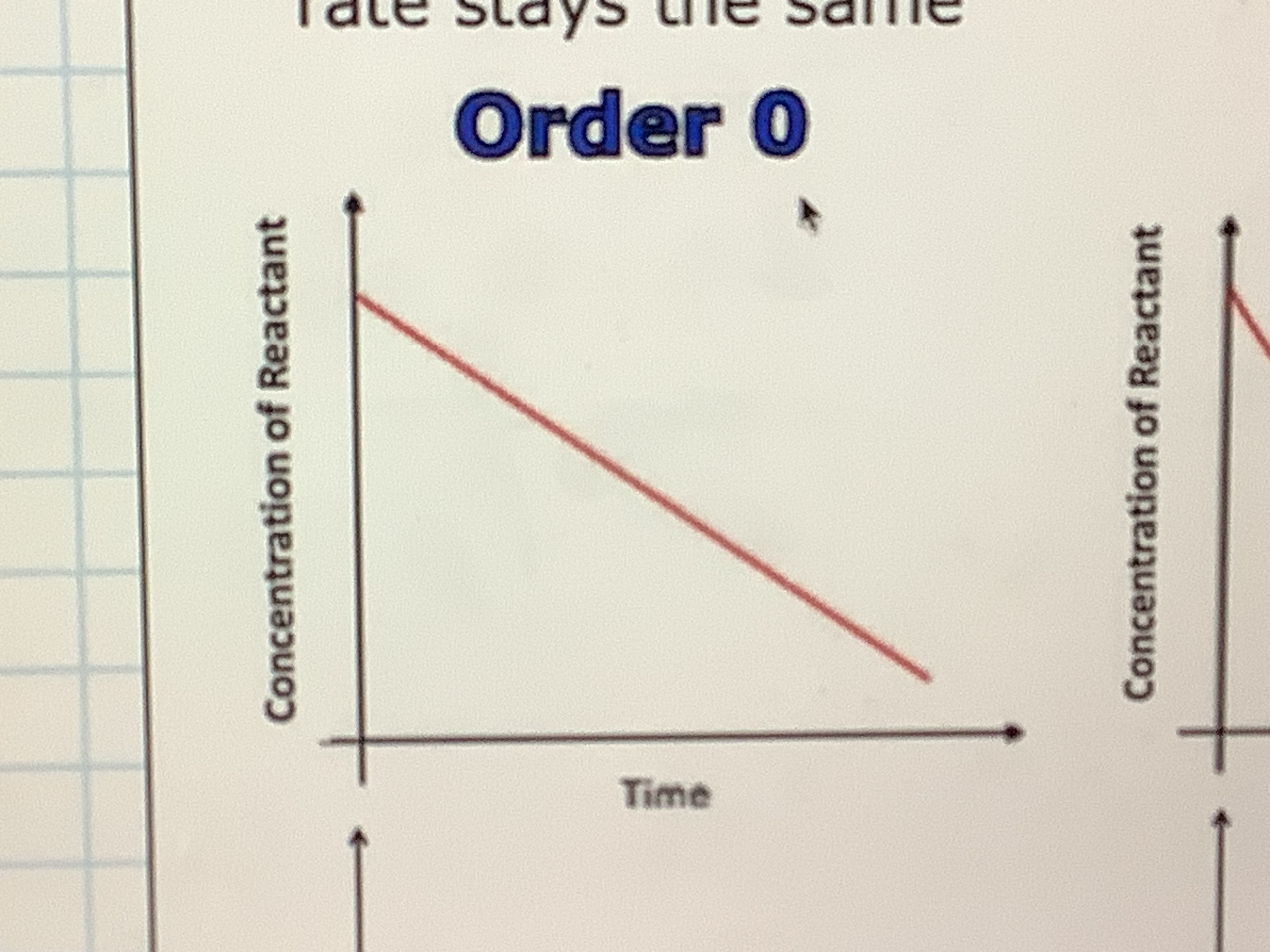
What would a graph look like for order 0 showing concentration and rate of reaction
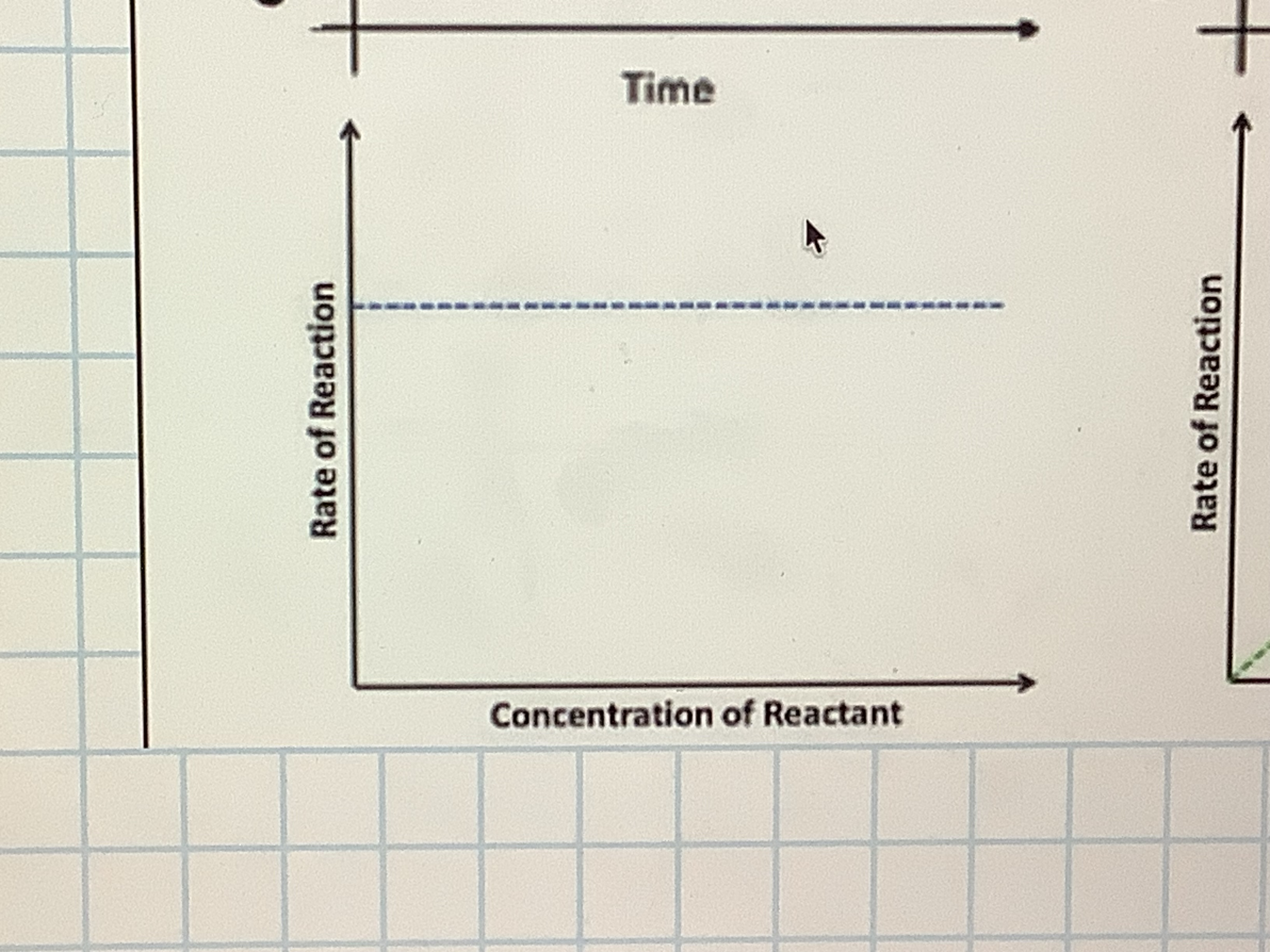
What would a graph showing order 1 for conenctration and time
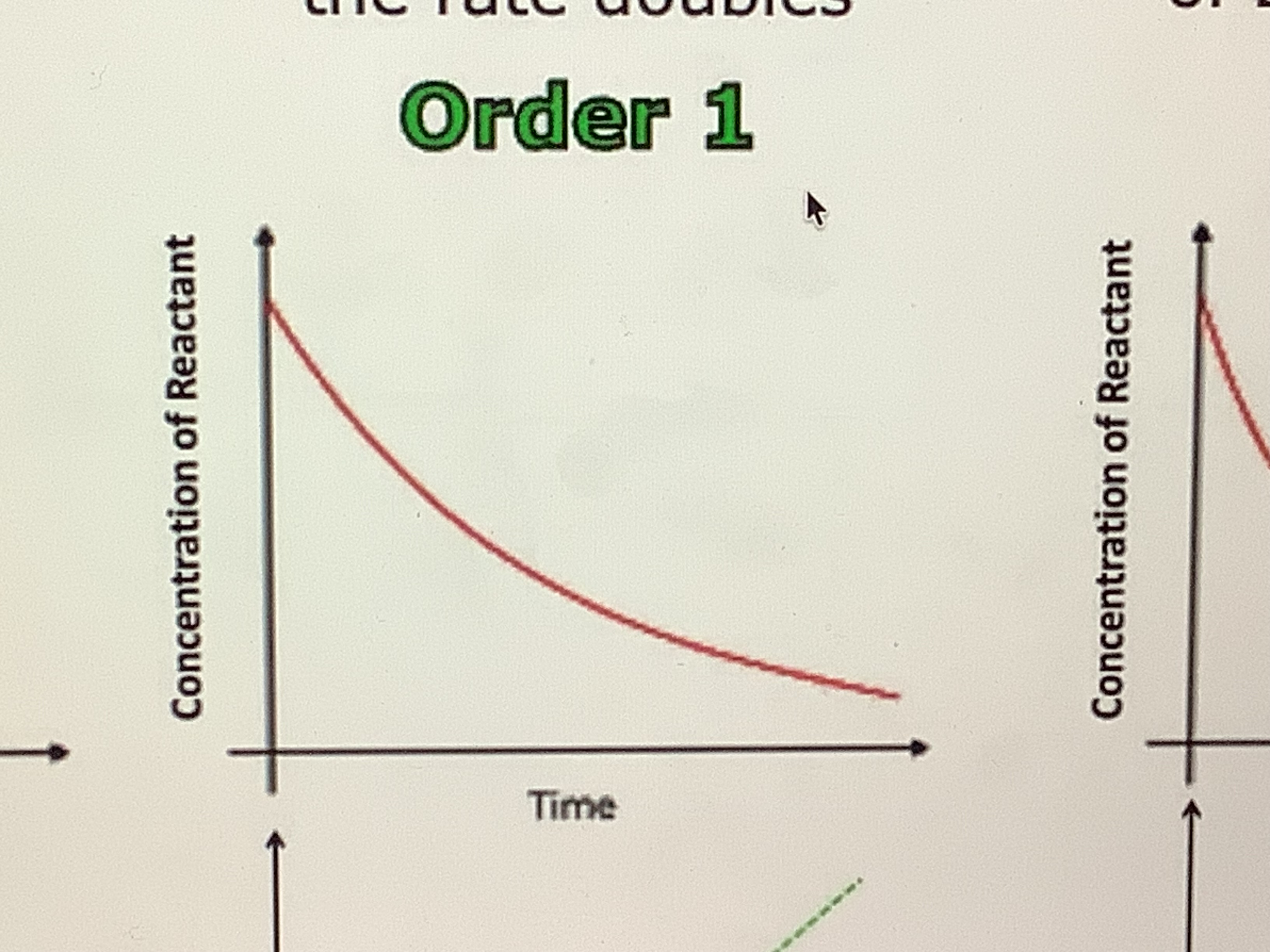
Order 1: concentration/ rate of reaction
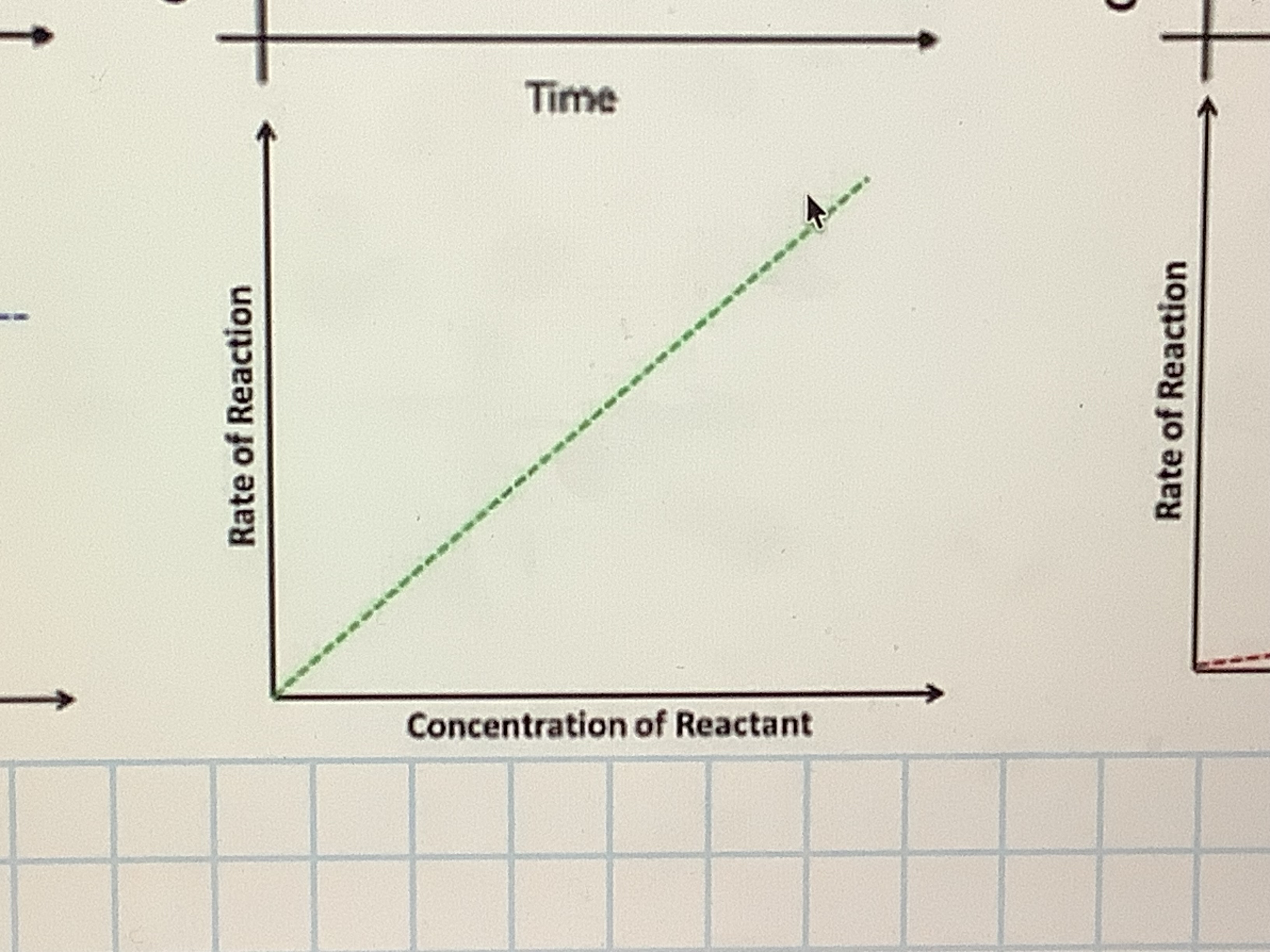
Order 2: concentration/ time
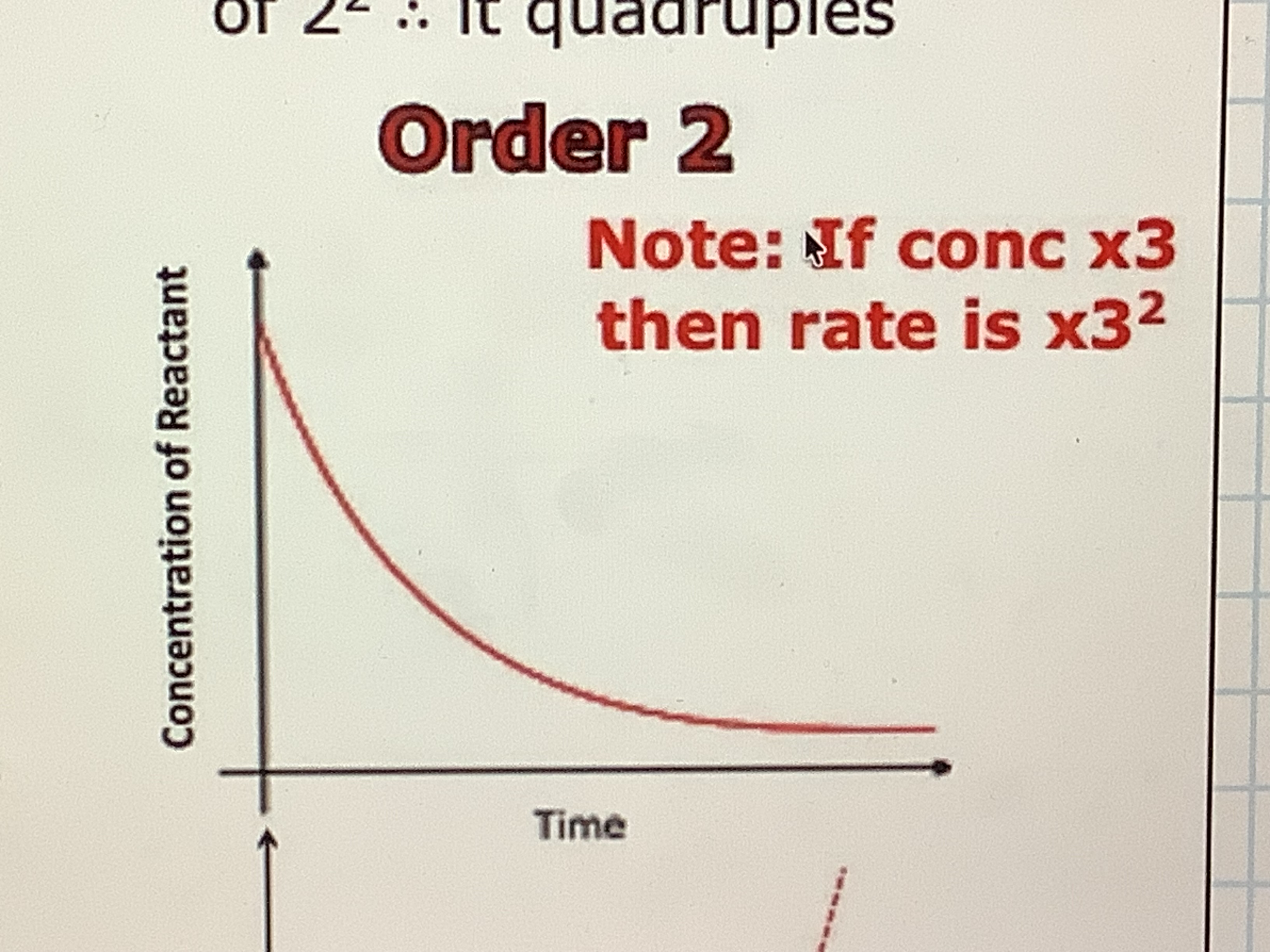
Order 2 : concentration/ rate of reaction
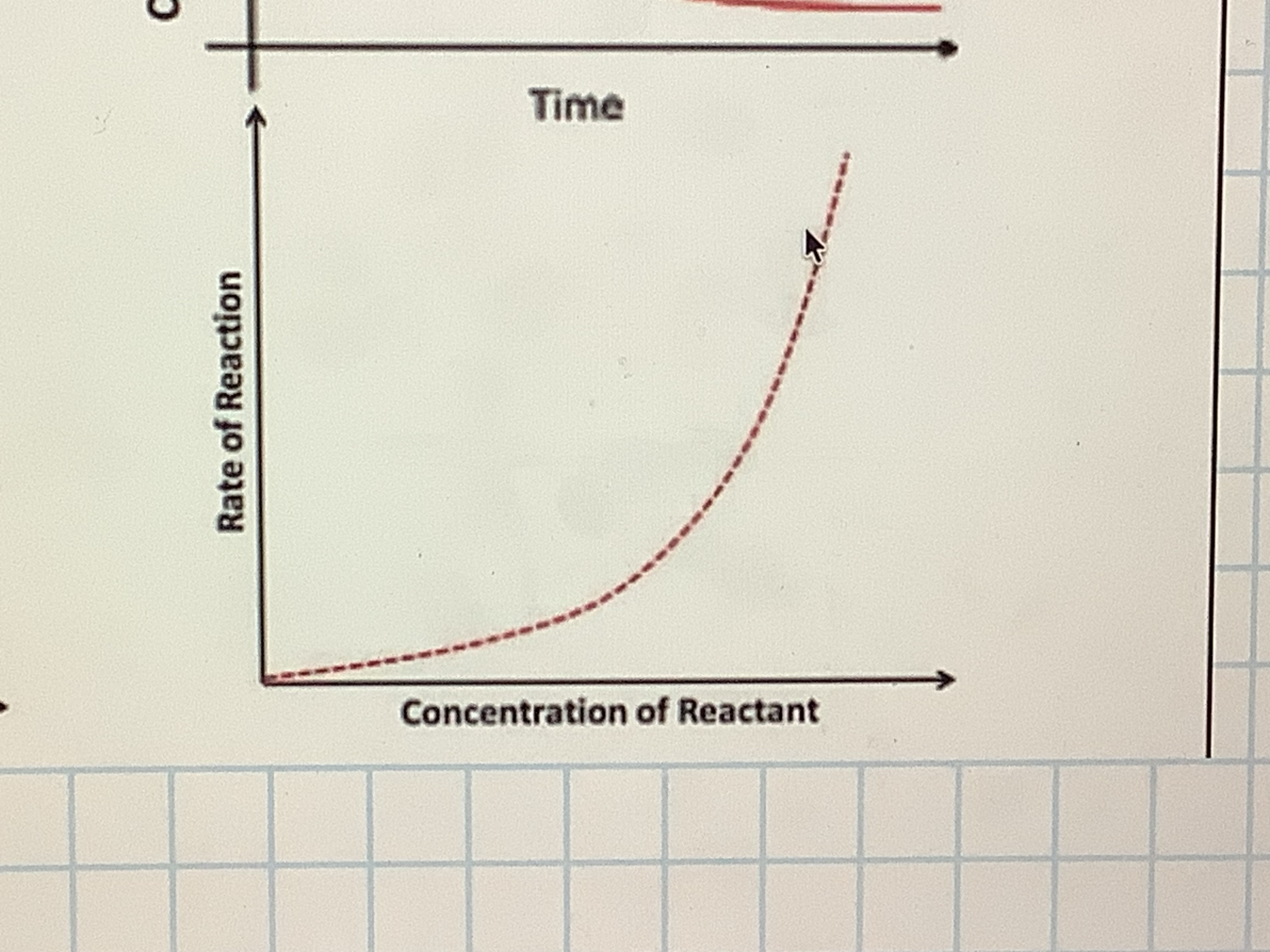
lattice enthalpy
the energy change that accompanies the formation of one mole of ionic compound from gaseous ions under standard condidtions
standard enthalpy change of formation
the enthakpy change that happens when one mole of an element is formed from its constituent elements under standard conditions
enthalpy change of atomisation
the enthalpy change that takes place when one mole of gaseous atoms forms from the element in its standard states
firs ionisation energy
the energy required to remove one electron from each atom in one mole of gaseous atoms to form one mole of gaseous 1+ ions
electron affinity
the enthalpy change that takes place when one electron is added to each atom in one mole of gaseous atoms to form on mole of gaseous 1- ions